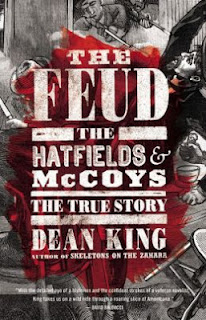 Cities: Culture, Landscape, and Urban Space. He is a historian at Temple University and lives in Penn Valley, PA.
Cities: Culture, Landscape, and Urban Space. He is a historian at Temple University and lives in Penn Valley, PA.Isenberg applied the “Page 99 Test” to his new book, Wyatt Earp: A Vigilante Life, and reported the following:
Page 99 of Wyatt Earp: A Vigilante Life describes faro, the most popular card game in the nineteenth-century West. The book devotes attention to the game because Earp was an accomplished gambler who made his living primarily as a faro dealer. To understand Earp, one must understand the culture of faro in the nineteenth-century West.Learn more about Wyatt Earp at the Hill and Wang website.
The rules of faro are simple: players bet on one or more of the thirteen face cards in a standard deck, and the dealer turns over pairs or cards: “winners” which pay players who have bet on that card, and “losers” which pay the dealer if a player has bet on that card. At the end of play, when there are three cards left in the deck--note the resemblance to three-card monte--the players bet on the order in which the three cards will appear.
The odds only barely favor the dealer, which is why a faro dealer was, almost by definition, a card cheat. Faro players understood that dealers were palming cards, and part of the challenge for a player was to outsmart (or out-cheat) the dealer.
Faro offers a window into Wyatt Earp’s personality. A faro dealer cultivated an air of detachment. The poise and coolness that contemporaries saw in Earp was, in many respects, a trait he developed at the gaming tables.
The boundary between faro dealer and confidence man was blurry. Like dealers of three-card-monte, faro dealers often worked with an accomplice posing as a player who would amble up to the table, place a few bets, win easily, and draw real players to the table. In the 1870s and 1880s, Earp, working with accomplices, sold rocks painted yellow as gold. In 1896, he was involved in fixing a heavyweight championship prizefight in San Francisco. Earp never reformed: in 1911, he was arrested by the Los Angeles police bunco squad for running a crooked faro game.
The law-breaking for which Earp is best known was his so-called “vigilante ride” in 1882, in which he killed some of the men he held responsible for the murder of his brother, Morgan. Earp justified the killings by claiming that the murderers would never have been brought to justice in Arizona’s corrupt courtrooms--a claim that is hard to dispute. But the vigilante killings were also the acts of a gambler and con man accustomed to living by his own rules.
--Marshal Zeringue


























